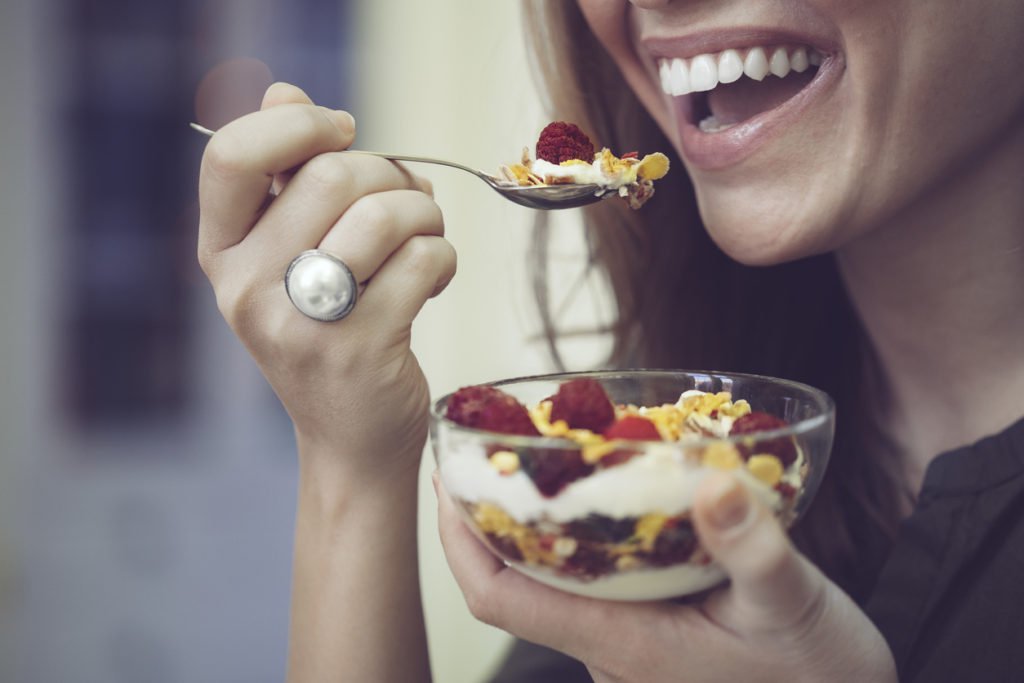
These 5 Health Foods Aren’t as Healthy as You Think
The world of health foods can seem tough to navigate. Foods that are hailed as healthful one week can be demonized the next, and trends like sugar-free, fat-free, low-carb, or gluten-free come and go before you have time to figure out what you’re allowed to eat.
Add to that the fact that manufacturers are often trying to trick us into believing unhealthy foods are actually health foods, and this sphere gets even murkier.
That’s why we’re profiling five foods that might surprise you: often on lists of health foods, it turns out that they’re actually not as good for you as you might think.
1. Juice
Juicing has become extremely popular to facilitate ingesting large amounts of nutrients on the go, but many experts claim that juicing actually isn’t all that healthy. While they do note that it’s better to juice than to avoid fruits and vegetables entirely, it’s much better to eat healthy produce than it is to ingest your five-a-day in juice form.
“The difference between whole fruit and the juice is the fiber content,” explains Melanie Ordway, Registered Dietitian at Fordham University. “Fiber helps slow the digestion process and prevents a rapid spike in blood sugar. When our blood sugar rises, insulin is secreted, and this hormone is a fat-storing hormone.”
While there’s nothing wrong with enjoying a glass of green juice every now and then, the sugar content in juice means that it should be replacing other sweet treats in your diet — not produce — and that it should be consumed in moderation.
Choose instead: Whole fruit, which contains essential fiber. If you really feel a need to consume your fruit and veg in liquid form, consider a smoothie, which contains the whole fruit and therefore retains more of the original fiber.
2. Whole Wheat Bread
The democratization of whole wheat everything may seem like a victory for health-conscious shoppers, but in reality, whole wheat grocery store loaf isn’t all that much better for you than white.
Many breads (or foods in general) with the whole wheat label contain some fine print: breads may contain only a portion of whole wheat flour while the rest of the bread is made with white flour.
Even if you do get your hands on 100 percent whole wheat, it’s hard to know if it’s true whole wheat or not. The FDA requires that whole wheat bread contain germ, endosperm, and bran in proportions equal to those of the whole grain, but food manufacturers often just add the germ and bran back into heavily processed white flour, which means you’re still not getting a full nutritional bang for your buck.
And while whole wheat bread does contain more nutrients than white, the two breads have approximately the same glycemic index: whole wheat has more nutritional value but isn’t necessarily all that better for your health, because you can get those same nutrients elsewhere without wrecking havoc on your blood sugar levels.
High-quality homemade or artisan whole wheat bread can be a sometimes treat, but it shouldn’t be an everyday indulgence.
Choose instead: Danish whole rye bread, which is not only more nutrient-dense than wheat bread but more filling, according to a Swedish study, so you don’t need to eat as much.
3. Organic Granola Bars
Granola bars may look like health foods given all of those nuts and whole grains, but in reality, most granola bars are just packed full of sugar.
Nature Valley granola bars, for example, contain three kinds of sugar (sugar, honey, brown sugar syrup) for a whopping 11 grams of sugar per serving (with only two grams of fiber for the same serving size). Canola oil is also the third ingredient listed on these bars, which is genetically modified rapeseed oil, much of which is grown from Monsanto seeds in the U.S.
While some organic bars contain natural non-cane sweeteners like maple syrup or agave, the truth of the matter is that on the whole, there’s just far too much sugar holding these bars together to allow the whole grains to be of any real benefit.
Choose instead: Homemade breakfast bars, so that you can control the amount of sugar that goes into them.
4. Yogurt
Yogurt in its true form is a fermented milk product full of live cultures that can promote gut health. But many products peddled as yogurt today are problematic in two ways: first, flavored yogurts are chock full of sugar, making them closer to ice cream than to yogurt. One eight-ounce container of Yoplait yogurt contains 18 grams of sugar (recently down from 26 grams), the same amount as a Snickers fun size bar. The sugar in these products counteract any beneficial effects that the probiotics can have on your gut health.
Second, many yogurt products don’t actually contain live cultures. A report carried out by the Cornucopia Institute to this effect showed that many foods currently marketed as yogurt should not be allowed to bear the name, given their deviation from the processes and ingredients traditionally used to make yogurt.
The Cornucopia Institute petitioned the FDA to enforce the legal definition of yogurt in the same way it does the legal definition for cheese and so-called cheese foods.
Many brands of yogurt also contain carrageenan as a thickener, which, like the heaping amounts of sugar in these products, may exacerbate gut problems rather than help them.
Choose instead: Homemade plain yogurt, so that you can have a hand in how your yogurt is handled. Or choose one of the top yogurts on the Cornucopia Institute’s yogurt scorecard.
5. Dried Cranberries
Cranberries are super healthy for you, but dried cranberries? Not so much.
Most brands of dried cranberries contain at least some sugar. Ocean Spray Craisins, for example, contain 29 grams of sugar per 1/4 cup, and reduced sugar versions from the same brand contain 14 grams of sugar. They also contain vegetable oil to keep the dried cranberries from sticking to one another. In other words, most dried cranberries are more like candy than actual fruit.
But this becomes even worse when you realize that many people who choose cranberries often do so to keep UTIs at bay — and sugar is one of the worst things to choose when trying to stave off these infections.
Add to this the fact that dried cranberries — like most dried fruits — contain sulfites, which can cause headaches in some people, and these little dried fruits don’t seem like such a good choice after all.
Choose instead: Either sugar-free, sulfite-free cranberries, which are a bit tough to swallow plain but are nice when added to baked goods or salads, or good, old-fashioned raisins (choose brands without added sugar and sulfites).
* This article was originally written and published on http://www.organicauthority.com/the-top-5-unhealthiest-health-foods-which-ones-are-you-eating/

